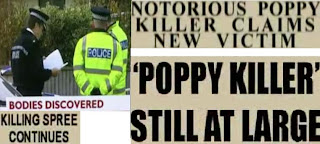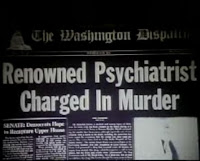Our film opening sequence follows the forms and conventions of real opening sequences, but it also challenges and develops some of these conventions. ‘Remembrance’ is based around the genre of a psychological thriller; however it has aspects of horror due to the murders that will be committed. We therefore constructed an opening sequence using some conventions of these genres to make it familiar and recognisable for the audience. However, we wanted to keep the genre fairly unknown to the audience until the end, when they get a shock.
Our opening sequence follows the same form of most openings by:
- Introducing the main character
- Introducing the narrative
- Indicating the themes
- Including titles throughout
- Incorporating music
- Having a visual reference to the film title.
Despite the fact that our opening sequence follows the conventions of the forms of opening sequences, it has its own style. Throughout our opening sequence there are several hints as to the themes of our film which are similar to many themes of other thriller/horror films.
Typical themes include:
Murder
Revenge
Mental illness
Jealousy
Obsession
Fear
Our film follows many of these conventions with some illustrated in our opening sequence. Common themes include murder, revenge and mental illness. Ours is a combination of these, with murder being extremely obvious
The other major theme that the audience is likely to notice is that of war and battle, which isn’t that common in thrillers or horrors and therefore challenges conventions. This starts 
 camouflaged trousers in wardrobe, dog tags. We were inspired from films such as Jarhead (2005) for the stereotypical image of a war soldier. There are also the newspaper articles and images concerning the modern issues of the Iraq War. This is also shown in the close-up pan across the shelf where there is a photo of the main character in military uniform, a war medal (to suggest a hero)
camouflaged trousers in wardrobe, dog tags. We were inspired from films such as Jarhead (2005) for the stereotypical image of a war soldier. There are also the newspaper articles and images concerning the modern issues of the Iraq War. This is also shown in the close-up pan across the shelf where there is a photo of the main character in military uniform, a war medal (to suggest a hero) 
Our film challenges the conventions of typical thriller movies with regards to characterisation. The main character plays a hero and villain. In the eyes of society and everyone around him, even his mother, he has done a heroic deed by participating in the Iraq War. We make the audience feel sympathy for him at the start while he is having his nightmare. The audience believe the war, his experiences and what he has seen has affected him deeply, made him unsettled and disrupted his life. However, as he goes about his daily routine, the audience soon seem to notice that his heroic gesture has had an even worse effect on him and has twisted his mind, affecting him mentally. This is seen when he grins at the news broadcasting of a murdered soldier nearby. This could be an example of the ‘false hero’ character role, as identified by Propp with regards to narrative theory. Thriller movies conventionally have a hero and a villain. We have incorporated these characteristics into one person making him more deceptive and sinister as the audience will see two different sides to him, demonstrated in two contrasting scenes in the opening sequence where he has a seemingly genuine conversation with his mother, but then picks up the knife and poppy. This is similar to Patrick Bateman in American Psycho (2000) where he appears normal sometimes (during the day) but then becomes a killer. The visuals generate questions and this creates enigma as the audience are intrigued as to what will happen next.  When the people in the film discover that he is really the killer, they will be shocked. This is similar to Dr. Hannibal Lecter (the cannibal) in The Silence of the Lambs (1991), Hannibal (2001) and Red Dragon (2002). He was a brilliant renowned psychiatrist but turned infamous psychopathic serial killer.
When the people in the film discover that he is really the killer, they will be shocked. This is similar to Dr. Hannibal Lecter (the cannibal) in The Silence of the Lambs (1991), Hannibal (2001) and Red Dragon (2002). He was a brilliant renowned psychiatrist but turned infamous psychopathic serial killer. 
We also challenge conventions of typical victims in thriller/horror films. They are not innocent looking, vulnerable, young females such as Marion in Psycho (1960). In Remembrance, they are male, ex-soldiers who are stereotypically seen as strong, tough characters.
The soundtrack is quite sinister, dark and depressing and resembles marching 
We also challenge a lot of the conventions usually associated with a thriller to create interest among audiences. A main part is lighting as we filmed in daylight, we do not get that eerie atmosphere that the audience would get if it was filmed using darker lighting. Also as the main character is in a normal suburban house, there aren’t any props or typical iconography to suggest it’s a thriller until the audience sees the photo of the battalion with crossed out faces and the knife at the end. The camera movement is also quite slow paced in order to build up the tension to the point of the opening of the draw.
Our opening sequence follows a classic narrative pattern, showing the character waking up, getting ready and preparing for his evil actions that will follow in the rest of the film. The sequence shows normality and equilibrium, set in a normal suburban house. However, throughout our sequence there are indicators of disruption, such as the nightmare, the news broadcasting and the grin at it, the newspaper articles and images. Despite the fact that the character is doing everyday ordinary things, it is edited in a way to make the audience feel insecure. This was common in thriller movies, where they turned everyday circumstances into a frightening situation, putting the audience on edge. At the end of the film, order is restored but it is not the same as the beginning as events have taken place and people have died along the way.
As our opening sequence follows a classic narrative pattern and is a linear sequence, similar to other real film openings, we tried to create a seamless effect with continuity. Various narrative techniques were used in order to achieve this as effectively as possible such as transitions of fades and dissolves during the nightmare to convey a slight passing of time. We also shot the nightmare from varied angles and distances so that we could edit this together and communicate the idea of disorientation and make it quite jumpy for the viewer. Also the technique of eyeline matching where the character looks out of frame. This was done where the character turns on the television. We then used a shot-reverse-shot in order to show his reaction to the news and literally place the audience in the action. Before he enters the living room to turn on the TV, we used a match on action when he opens the door, in order to continue the flow of the scene. We used an ellipses of when the main character has got up, looked in his wardrobe and is about to get ready to move the sequence forward. These ‘gaps’ in the sequence were filled with images to signify the passing of time and therefore not to disrupt the viewing of the audience.


No comments:
Post a Comment